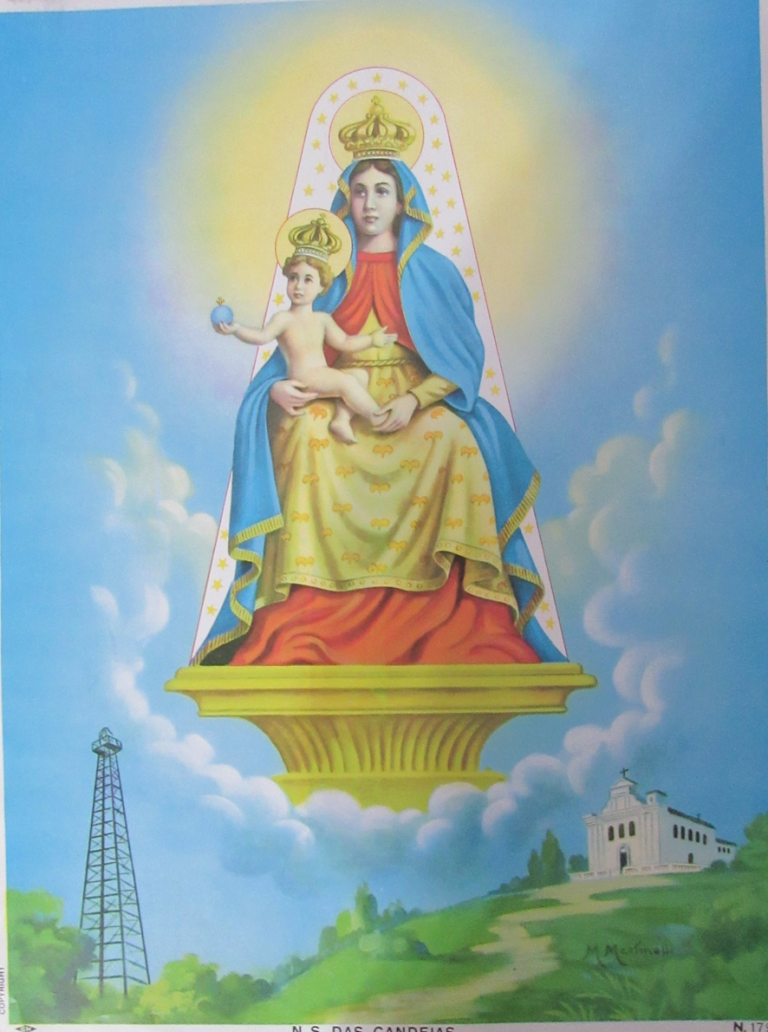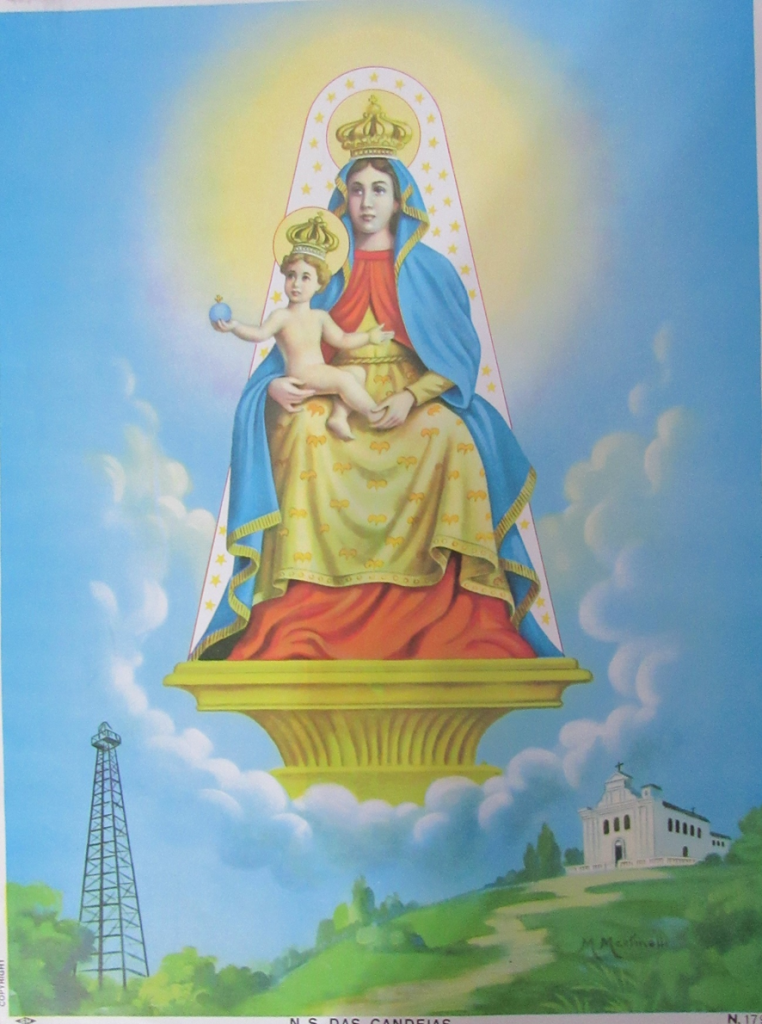

Nossa Senhora da Candelária ou das Candeias
Conta-se que a imagem de Nossa Senhora da Candelária (também invocada como Nossa Senhora das Candeias, Nossa Senhora da Luz ou Nossa Senhora da Purificação) tenha sido achada por dois pastores em uma gruta, na praia de Chimisay, na ilha de Tenerife (Espanha), onde já se encontrava mesmo antes da conquista dessa ilha, que ocorreu no ano de 1492. Acredita-se que tenha sido levada para as Ilhas Canárias pelos espanhóis.
Conta-se, também, que, ao redor da imagem havia numerosas candeias que pairavam no espaço, como se sustentadas por seres invisíveis, o que levou os nativos das Ilhas Canárias a honrar aquela aparição de modo especial
Alguns nativos, todavia, passaram a temer essa imagem e, ao tentarem destrui-la, ficaram com as mãos paralisadas. A imagem foi, então, guardada em uma caverna, local em que, séculos mais tarde, foi construído o primeiro Santuário de Nossa Senhora da Candelária (1672), sob a atenção da Ordem Dominicana.
A imagem original, entalhada em madeira dourada e policromada, medindo um metro de altura, retratava Maria com o Menino em seu braço direito, segurando uma candeia de cor verde na mão direita. Essa imagem original desapareceu em novembro de 1826 quando uma forte inundação danificou gravemente o Santuário.
Em 1827, Fernando Estévez esculpiu a imagem de Nossa Senhora da Candelária atualmente venerada. Em meados a do século XIX foram iniciadas as obras do novo templo, concluída apenas na década de 1930, a partir quando se passou a celebrar a festa de Nossa Senhora da Candelária todos os anos, no dia 1 agosto.
O culto à Nossa Senhora da Candelária foi muito difundido em Portugal e, posteriormente nos países colonizados pelo império português, especialmente no Brasil.
Lady of Candeias
It is said that the image of Our Lady of Candlemas (also invoked as Our Lady of Candeias, Our Lady of Light or Our Lady of Purification) was found by two shepherds in a cave, on the beach of Chimisay, on the island of Tenerife (Spain), where it was located even before the conquest of this island, which occurred in the year of It is believed to have been taken to the Canary Islands by the Spanish.
It is also said that around the image there were numerous lamps that hovered in space, as if supported by invisible beings, which led the natives of the Canary Islands to honor that apparition in a special way.
Some natives, however, began to fear this image and, when they tried to destroy it, their hands were paralyzed. The image was then kept in a cave, where, centuries later, the first Sanctuary of Our Lady of Candlemas was built (1672), under the care of the Dominican Order.
The original image, carved in gilded and polychrome wood, measuring one meter in height, portrayed Mary with the Child in her right arm, holding a green lamp in her right hand. This original image disappeared in November 1826 when a strong flood seriously damaged the Sanctuary.
In 1827, Fernando Estévez sculpted the image of Our Lady of Candelária currently venerated.
In the mid-19th century, work began on the new temple, which was only completed in the 1930s, when the feast of Nossa Senhora da Candelária began to be celebrated every year, on August 1st. The cult of Our Lady of Candlemas was widespread in Portugal and, later, in countries colonized by the Portuguese empire, especially in Brazil.
Fonte: Ave, Maria – Memnon Edições Científicas – 2014
Produzido por

Consulte a Agenda do Museu a partir de 2025 e o visite quando receber sua confirmação de visita em seu email ou whatsapp.
Por se tratar de um museu particular, é necessário se cadastrar na Comunidade MuMi e customizar sua visita.
Criação e Tecnologia: Clayton Tenório @2025 MuMi – Museu Mítico